Power Amps Guide
Wattage
Wattage determines the overall power output of the Amp, defining how loud and clear the audio will be. It is important to assess your specific audio needs before making a decision. For smaller venues or personal use, a lower wattage power amp such as the Behringer iNUKE NU4-6000 with a power output of 2 x 1500 Watts might be sufficient. However, for larger venues or professional application, a higher wattage power amp like the QSC GX7 with a power output of 725 Watts per channel at 8 ohms would be a better choice. Looking at different price segments, you can find power amps ranging from budget options such as the Crown XLS 1502 with a power output of 525 Watts per channel, to high-end options like the McIntosh MC462 which delivers a whopping 450 Watts per channel at 2, 4, or 8 ohms.

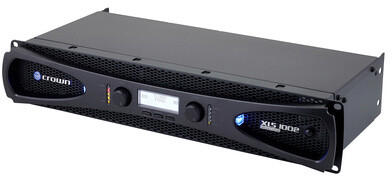
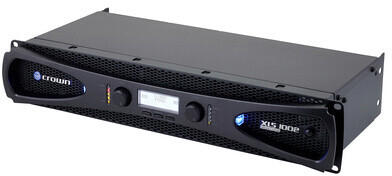
Ohms
The ohms rating indicates the impedance the power amp can handle effectively, and matching the amp's ohms with the speakers' is vital for optimal performance. For example, the Yamaha PX10 is a powerful power amp with an ohms rating of 4-8 ohms, making it ideal for a variety of speaker setups. Another impressive option is the Crown XLS1502, which offers an ohms range of 2-8. For those in need of more power and flexibility, the QSC GX7 supports a wide ohm range of 2-8 and delivers exceptional performance. When considering power amps based solely on their ohms rating, these options offer versatility and ensure compatibility with a range of speaker setups.



Channel configuration
This refers to the number of channels the power amp can provide for audio input and output. Different channel configurations cater to different audio setups and preferences. For example, if you are looking for a power amp for a basic home stereo system, a stereo power amp with two channels, such as the Emotiva BasX A-100 or the Yamaha A-S301, would be suitable. These power amps allow for a left and right channel connection, delivering separate audio signals to each speaker.
However, if you require a power amp for a more complex setup, such as a home theater or recording studio, you may need a multichannel power amp. Options like the Marantz MM7025 or the Rotel RB-1582 MkII offer 2 to 5 channels, enabling connections to multiple speakers or audio sources for surround sound or elaborate audio setups. These power amps enhance the audio experience by distributing sound across multiple channels, resulting in a more immersive and dynamic sound field.
Impedance handling
Impedance refers to the electrical resistance present in a speaker or load. Different speakers have different impedance ratings, and it is crucial to choose a power amp that can handle the impedance of your speakers to ensure optimal performance and prevent damage.
In the market, power amps vary in their impedance handling capabilities. Some power amps are specifically designed for low impedance loads, such as the QSC PLD4.3 Multi-Channel System Processing Amplifier, which can handle loads as low as 2 ohms per channel. Other power amps, like the Crown XLi800 Power Amplifier, have a broader impedance range and can handle loads from 4 ohms to 8 ohms per channel.


It's important to note that improper impedance matching can cause distortion, reduce power output, or even damage your power amp and speakers. Therefore, it is always recommended to consult the specifications of both your speakers and power amp to ensure a proper impedance match.
Frequency response range
The frequency response range of a power amp refers to the range of frequencies that the amp can accurately reproduce. It is typically measured in Hertz and expressed as a range, such as 20Hz - 20kHz. The wider the frequency response range, the more accurately the power amp can reproduce both low and high-frequency sounds. For example, the Yamaha A-S301BL power amp boasts an impressive frequency response range of 10Hz - 100kHz, ensuring that it can faithfully reproduce a wide range of audio frequencies. Other notable power amps with excellent frequency response ranges include the Cambridge Audio CXA80 (5Hz - 60kHz) and the Marantz PM6006 (10Hz - 70kHz).
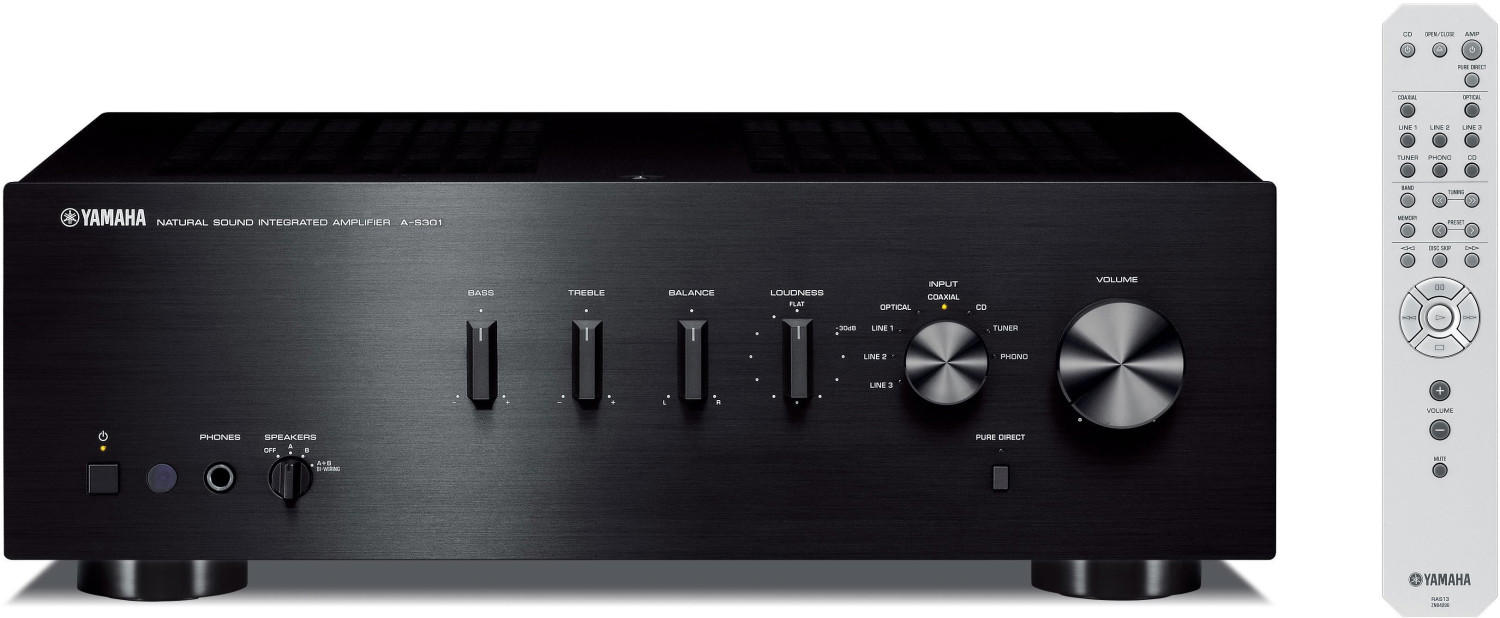
Distortion
It refers to any unwanted alteration in the sound signal caused by the amplification process. It is crucial to find a Power Amp that can produce clear, precise, and distortion-free sound to ensure the highest audio quality. Two excellent products available on the market are the McIntosh MC462 and the Cambridge Audio Edge A Integrated Amplifier.
The McIntosh MC462 belongs to the high-end segment of Power Amps, offering a Total Harmonic Distortion of less than 0.005% for both balanced and unbalanced inputs. This translates into incredibly clean and accurate sound reproduction. It also provides a vast frequency response range of 20Hz to 20kHz, ensuring every detail in your music can be heard. The Cambridge Audio Edge A Integrated Amplifier falls into the mid-range segment, offering a Total Harmonic Distortion of less than 0.002% at 1kHz, enabling minimal distortion levels. With a frequency response of 5Hz to 150kHz, this amplifier ensures excellent audio clarity across a wide range of frequencies. Both of these Power Amps are exceptional choices for audiophiles seeking distortion-free sound reproduction.
Signal-to-noise ratio
A higher SNR value indicates cleaner and more precise sound. When comparing options, look for power amps with SNR specifications that are higher than 100 decibels (dB). This level of SNR is considered excellent and guarantees superior audio performance. Notable power amps that offer impressive SNR include the Audioengine N22 Desktop Audio Amplifier with an SNR of 95 dB, and the Yamaha A-S301BL Natural Sound Integrated Stereo Amplifier with a remarkable 110 dB SNR. These power amps, along with others in their segment, are designed to provide exceptional signal-to-noise ratios for an enhanced listening experience.
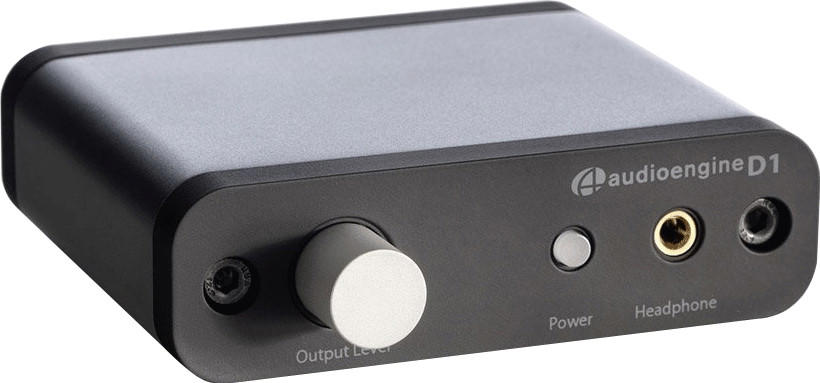
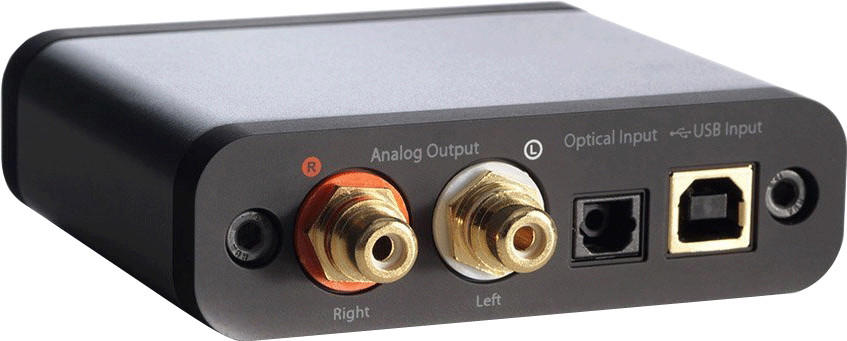

Power amplifier class
Power amplifier classes refer to the way amplifiers are designed and operate, with each class having its own advantages and disadvantages.
One popular class of power amplifier is Class AB, which combines the best of both Class A and Class B amplifiers. It offers good efficiency and a low crossover distortion, making it suitable for various applications. One recommended product in this class is the Yamaha A-S701 Stereo Amplifier. It delivers 100 watts per channel at 8 ohms, ensuring ample power for a high-quality audio experience.
Another class of power amplifier worth considering is Class D, known for its high efficiency and compact size. Class D amplifiers use pulse width modulation (PWM) technology to deliver power, resulting in less heat dissipation. An excellent example in this class is the NAD D 3020 V2 Hybrid Digital Amplifier. This amplifier combines the efficiency of Class D with the smooth sound of analog amplification, providing 30 watts per channel and a sleek design.
Other popular classes of power amplifiers include Class A, which offers the best sound quality but lower efficiency, and Class H, which uses multiple power supply voltages to improve efficiency. These classes may be suitable for different applications such as professional audio or high-end home theaters.
Power supply
The power supply directly impacts the amplifier's performance and its ability to deliver clean and powerful sound. Look for power amps that have a robust power supply with ample voltage and current reserves.
For a budget-friendly option, Behringer A800 is a great choice. It features a high-current toroidal transformer, which provides excellent voltage stability and ample reserves for delivering punchy and dynamic sound. It also has an impressive power output of 400 watts per channel at 8 ohms.
For those seeking a premium option, the McIntosh MC312 power amp is worth considering. Its Power Guard screen grid voltage and signal waveform monitoring system ensure maximum performance and protection without compromising sound quality. With a total power output of 300 watts per channel, this power amp delivers stunning audio accuracy and clarity.
In terms of market segments, there are also power amps designed for professional use. The Crown Audio I-Tech 4x3500HD falls in this category, offering cutting-edge technology like BCA (Balanced Current Amplification) and ODEP (Output Device Emulation Protection) to provide incredible performance and safeguard against potential failures. With a rated power output of 3500 watts per channel at 4 ohms, this power amp is perfect for demanding live sound applications.
Input connections
One commonly used input connection is the RCA connection, which allows for easy integration with consumer audio devices like CD players and turntables. For those looking for more professional-grade setups, balanced XLR inputs provide a clean and noise-free signal transmission, maintaining fidelity over longer cable runs. Some power amps even provide a combination of input connections, such as the Yamaha A-S701 Stereo Integrated Amplifier, which features both RCA and balanced XLR inputs, catering to various audio setups and preferences.
Other power amps in the market might be grouped into different segments based on their input connections. One segment could be the "Bluetooth-enabled power amps", which provide wireless connection options for streaming audio from smartphones and other Bluetooth-enabled devices. Examples within this segment include the Audioengine N22 Wireless Desktop Audio Amplifier boasting a Bluetooth 5.0 connection, and the Fosi Audio BT20A Bluetooth Stereo Amplifier supporting Bluetooth 4.2.
Another segment could consist of "Power amps with digital inputs", ideal for those who want to connect their amps directly to digital audio sources like computers or Blu-ray players. Here, products like the Cambridge Audio CXA61 Stereo Two-Channel Amplifier with multiple digital inputs (optical, coaxial and USB), or the NAD D 3045 Hybrid Digital Amplifier with two optical inputs, provide versatile options for digital connectivity.
Considering the input connections offered by power amps ensures seamless compatibility with your desired audio sources, whether it be for consumer-grade or professional applications.
Output connections
These connections determine how the amp will connect to your other audio equipment, such as speakers or mixers. There are a few different types of output connections to be aware of.
One common type of output connection is the binding post or banana plug. These are usually found on higher-end power amps and provide a secure and reliable connection. An example of a power amp that features binding post outputs is the Yamaha PX10 Power Amplifier. It offers a maximum output power of 1200W per channel (8 ohms) and is ideal for professional sound reinforcement applications.
Another type of output connection is the speakON connector. These connectors are widely used in the professional audio industry due to their robust locking mechanism and high current capacity. The Crown XLS 2502 Power Amplifier is a notable power amp that utilizes speakON connectors. With a maximum output power of 775W per channel (4 ohms), this power amp is perfect for live sound reinforcement and installations.
Finally, some power amps offer both XLR and 1/4" balanced TRS outputs. These connections are commonly found on power amps used in studio or recording setups. The QSC GX5 Power Amplifier is an excellent example featuring XLR and 1/4" balanced TRS outputs. With a maximum output power of 500W per channel (8 ohms), it is ideal for small venues, DJs, and musicians.


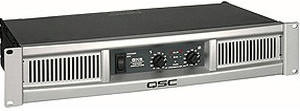
These are just a few examples of power amps with different output connection options. It's important to consider your specific audio needs and equipment setup when choosing the best power amp for your setup.
Control options (knobs, buttons, switches)
Control options for power amps can vary greatly, and it's important to choose one that offers the right level of flexibility and precision for your needs. Look for amplifiers that have extensive control options, such as a variety of knobs, buttons, and switches. For example, the Yamaha PX10 power amp offers a range of control options, including a handy Front Panel LCD display that allows you to easily adjust settings such as gain, mute, and metering.
Another excellent example is the QSC PLD4.3 power amp, which features a comprehensive set of controls, including individual gain knobs for each channel, power switches for bridged and parallel modes, and front panel LEDs for monitoring the signal status. This amp also provides advanced DSP capabilities, with options for configuring crossover filters, limiting, and other signal processing functions.

In terms of product segments, some power amps are designed specifically for professional audio installations, while others are more geared towards live sound applications. For installations, consider the Crown Audio CDi 1000 power amp, which offers extensive control options such as input sensitivity selection and remote power triggering. On the other hand, if you're looking for a power amp for live sound, the Behringer iNUKE NU6000 is a great option, featuring precise level controls and a combination of knobs and buttons for quick adjustments during performances.

Amplifier type (solid state, tube, hybrid)
The three main types are solid state, tube, and hybrid amplifiers.
Solid state amplifiers are known for their reliable and efficient performance. They use transistors and integrated circuits (ICs) instead of vacuum tubes to amplify the audio signal. They are often lighter, more compact, and less expensive than tube amplifiers. Examples of solid-state amplifiers include the Emotiva Audio XPA-2 Gen3, which delivers 300 watts per channel into 8 ohms, and the Yamaha A-S801BL, which provides 100 watts per channel into 8 ohms.
Tube amplifiers, on the other hand, use vacuum tubes to amplify the audio signal. They are often favored by audiophiles who appreciate their warm and rich sound quality. Tube amplifiers tend to deliver lower power outputs but are known for their ability to handle dynamics and demanding music genres with ease. Examples of tube amplifiers include the Marantz PM7000N, which offers a power output of 60 watts per channel into 8 ohms, and the McIntosh MC152, which provides 150 watts per channel into 2, 4, or 8 ohms.
Hybrid amplifiers combine the best of both solid state and tube technologies. They use a combination of transistors and tubes to deliver the desired audio performance. These amplifiers often offer a compromise between the warm sound of tubes and the efficiency of solid state amplifiers. The E Cambridge Audio AXA35 Hybrid Integrated Amplifier is a notable example, offering 35 watts per channel into 8 ohms.
Ultimately, the choice between solid state, tube, or hybrid amplifiers will depend on your personal preferences regarding sound quality, power output, and budget. Keep in mind that these amplifier types are just one aspect to consider when selecting the best power amplifier for your audio system.
Input sensitivity
The input sensitivity tells you how much voltage or signal the amp needs to deliver its full power output. Generally, amps with higher input sensitivities require less input signal to achieve maximum output power. However, it is important to make sure the amp's input sensitivity matches your source's output level to prevent distortion or a mismatched audio signal.
For instance, in the high-end segment of power amps, the McIntosh MC302 stands out with its input sensitivity of 0.75V to 1.5V, allowing it to work well with a wide range of source equipment. Another example is the Anthem STR Preamplifier/Power Amplifier, which has an input sensitivity of 800mV allowing for a versatile setup. In the budget-friendly range, the Yamaha A-S301 offers an input sensitivity of 160mV and can be paired with a variety of audio devices without any signal issues.
EQ controls
EQ controls allow you to adjust the tone of your audio signal, ensuring the best sound quality for your specific needs. Look for power amps that provide comprehensive and versatile EQ options, such as bass, midrange, and treble controls. One example of a power amp with excellent EQ controls is the Behringer iNuke NU6000DSP Power Amplifier. It features a graphic 3-band EQ with +15 dB boost/cut for each frequency band, allowing fine-tuned adjustments. Additionally, it is equipped with a feedback detection system and a built-in digital signal processor (DSP), which further enhance the sound quality.
Another option is the Crown XLi800 Power Amplifier, which offers a simple 2-band EQ with shelving filters for high and low frequencies. This power amp features variable input gain controls and a signal presence indicator, making it suitable for live performances and installations. For those in search of more advanced EQ options, the QSC GX5 Power Amplifier provides a three-position HF level control, along with a subwoofer bypass filter switch and a choice of low-pass filters. These EQ controls enable precise adjustments for various audio setups and maximize the performance of your audio system.



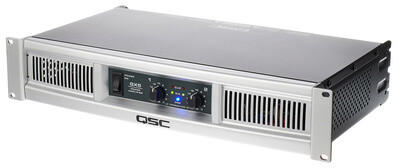
Built-in effects
Built-in effects can greatly enhance your sound and provide you with various options for tone shaping. One notable power amp that offers an array of built-in effects is the BOSS Katana-100 MkII. This power amp features five unique amp characters that range from smooth and vintage to modern and high-gain, allowing for versatile tones. It also includes a variety of effects such as reverb, delay, modulation, and overdrive, which can be easily fine-tuned using the intuitive interface. Another power amp option to consider is the Fender Mustang GT 200, which offers a vast selection of effects including distortion, chorus, flanger, and many more. This power amp provides in-depth control over each effect and even allows you to create your own presets using the integrated software. Overall, power amps with built-in effects like the BOSS Katana-100 MkII and Fender Mustang GT 200 provide a wide range of tonal possibilities, making them suitable for musicians who desire versatility in their sound.
Speaker outputs
It is essential to ensure that the power amp matches the speaker's impedance and wattage requirements to achieve optimal performance. Some power amp models provide various speaker outputs, such as Schiit Vidar with its dual Binding-Post output and a reliable 600 watts per channel power output. Another example is the Crown Audio XLS DriveCore 2 2502, which features multiple speaker outputs, including 2 x 300W at 8 ohms and 2 x 525W at 4 ohms. These power amps offer versatility and can accommodate a wide range of speakers, ensuring high-quality sound reproduction.



Size and weight
Depending on your application, you may require a compact and lightweight power amp for portability and ease of transportation. A great example of a small and lightweight power amp is the QSC PLD4.5. This amplifier weighs just 21 pounds and measures 3.5 inches in height, making it an ideal choice for musicians or DJs on the go. Another option in the same segment is the Crown XLS1002, weighing in at just 8.6 pounds and measuring 8.1 inches in depth. For larger setups that demand more power, the Crown XLi800 is a renowned choice. It weighs 17.4 pounds with compact dimensions of 3.5 inches in height and 7.7 inches in depth. Consider your load-in and out requirements, as well as the flexibility of transporting the power amp when evaluating size and weight.



Rack-mountable
Rack-mountable power amps are designed to fit into a standard 19-inch equipment rack, making them ideal for stage and studio setups where space is limited. These power amps typically feature a compact and lightweight design, allowing for easy installation and transportation. One example of a rack-mountable power amp is the Behringer iNuke NU4-6000. This power amp is capable of delivering 6000 watts of power, perfect for larger venues and events. It also features a Class-D amplifier technology, which provides high efficiency and low heat generation. Another option is the QSC GX5, which is a two-channel power amp that offers 500 watts per channel at 8 ohms. This power amp is known for its reliable performance and durability, making it a popular choice among professional musicians and audio engineers.
Cooling system
A good cooling system will help prevent overheating and ensure the longevity and optimal performance of your power amp. Look for power amps that feature efficient cooling methods, such as forced air cooling with fans or heat sinks. Some products worth considering in this regard include the Crown XLS1502 power amp, which integrates a forced air cooling system with a front-to-rear airflow and a sleek heat sink design. Another option is the QSC GX5, which employs an efficient forced air cooling system with rear-to-front airflow and a quiet operation. Both of these products are designed to efficiently dissipate heat and maintain low operating temperatures, thus enhancing the overall performance and reliability of the power amp.



Compatibility with other equipment
One factor to consider is the power rating of the power amp and how it matches with the speakers or other audio devices being used. For instance, the Crown XLS1502 Two-channel Power Amplifier offers a power rating of 155 watts per channel at 8 ohms, making it a suitable choice for most medium-sized audio setups. Additionally, the impedance compatibility should be considered. The Yamaha PX3 Dual-Channel Power Amplifier is compatible with both 8-ohm and 4-ohm speaker systems, offering flexibility for different setups. Another aspect to look at is the input/output compatibility, where the QSC PLD 4.2 Four-Channel Power Amplifier stands out with its comprehensive array of input and output options, including XLR, Euroblock, and speakON connectors, allowing integration with various audio systems seamlessly.



Build quality
A well-built power amp ensures durability and reliability, reducing the chances of breakdowns and costly repairs. Look for power amps that feature sturdy construction, solid materials, and excellent craftsmanship. One such example is the McIntosh MC462 Stereo Power Amplifier, known for its robust build with a polished stainless steel chassis and robust output transformer. Other options to consider include the Naim NAP 500 DR Power Amplifier, which boasts a quality build with multiple power supplies that isolate different sections of the amp, and the Pass Labs XA200.8 Mono Power Amplifier, which offers exceptional build quality with a massive chassis to minimize vibrations and interference. By prioritizing build quality, you can be assured of investing in a power amp that will deliver long-lasting performance.

Power efficiency
Power efficiency refers to the ability of the amplifier to convert input power into output power effectively, resulting in lower energy consumption and reduced heat generation. This not only saves power and reduces electricity costs but also ensures lesser strain on the amplifier, leading to enhanced reliability and longevity.
In the market, power amps can be broadly divided into different segments based on their power efficiency ratings. Class D amplifiers are known for their high efficiency, often surpassing 90%. The IcePower 1200AS2 by Bang & Olufsen and NAD C 298 from NAD Electronics are excellent examples that offer impressive power efficiency with their Class D technology. Another segment consists of Class AB amplifiers known for their balanced performance and decent power efficiency around 60-70%. The Yamaha MX-A5200 and Cambridge Audio Edge A are solid options in this segment, offering a good combination of power efficiency and overall sound quality. Remember, choosing an amplifier with high power efficiency will not only help to conserve energy but also allow you to drive your speakers without compromising on audio performance.
Dynamic range
5 . These amplifiers boast an impressive dynamic range of 110 dB and 112 dB, respectively. They utilize advanced technologies, such as high-efficiency Class D amplification and precise DSP control, to maintain optimal audio fidelity at all volume levels. Additionally, if you're looking for a more budget-friendly option, consider products like theBehringer Europower EP4000 or Crown XLS1502`. While these amplifiers offer a slightly lower dynamic range of around 100 dB, they still deliver impressive performance and reliability for the price.
Crosstalk
Crosstalk measures how much signal from one channel is leaked into another channel. This can impact the stereo imaging and separation of your audio, making it important to choose a power amp with low crosstalk ratings. A great power amp that excels in this area is the Yamaha A-S301BL Stereo Integrated Amplifier, boasting a crosstalk rating of less than -70 dB. Similarly, the Marantz PM6006 Integrated Amplifier offers excellent performance with a crosstalk rating of under -70 dB. These power amps are designed to maintain clear and distinct audio channels, allowing you to enjoy an immersive and detailed listening experience.
Ground lift
This feature helps to eliminate ground loop hum, which can be caused by multiple devices being connected to a common ground, resulting in unwanted noise. One power amp that provides a ground lift switch is the Behringer Europower EP4000, a professional 2-channel amplifier that offers a ground lift switch to address any ground loop issues. This amp is capable of delivering an impressive 4,000 watts of power, making it a suitable choice for large-scale events or installations. Another option to consider is the QSC GX7, a versatile power amplifier with built-in guardrail protection circuitry and a ground lift switch. This four-channel amp delivers 725 watts per channel at 4 ohms, making it ideal for powering multiple speakers simultaneously.



Protection circuits
One such example is the QSC GXD8 Power Amplifier, which features high-level and subwoofer filters, as well as built-in protection functions for DC, overcurrent, thermal, and short circuits. This amplifier also includes a strong direct limiting system that protects speakers from being overdriven. Another excellent option is the Crown XLS2502 Two-channel Power Amplifier, which incorporates advanced protection circuitry such as integrated PureBand Crossover System, Peakx Plus limiters, and Subharmonic Synthesizer. These protection features safeguard both the power amp and connected elements from potential hazards.
These examples belong to a segment of power amplifiers specifically designed for professional audio applications, ensuring that high quality audio signals are transmitted in a protected manner.
Overheating prevention
Look for power amps with robust thermal management systems that ensure efficient heat dissipation. The Behringer NU3000DSP iNuke Power Amp is an excellent option, equipped with an ultra-efficient cooling system that keeps the amp cool even during extended use. Additionally, the QSC GX5 Power Amplifier features QSC's Guardrail technology, which prevents overheating by providing advanced thermal proportional rhythm protection. For those looking for a high-end option, the Crown XLi3500 is worth considering, boasting integrated forced-air cooling fans that maintain optimal operating temperature levels. These power amps are designed with overheating prevention in mind to ensure reliable performance in various environments.


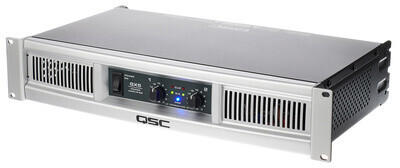
Compatibility with different musical instruments
Different instruments have varying output signals and power requirements, and a power amp that is suitable for one may not be ideal for another. For guitars and basses, a power amp with a high input impedance and the ability to handle both passive and active pickups would be ideal. The Marshall CODE 100W and the Orange Crush Pro CR120C 120W are both excellent options for guitarists, as they are designed to provide high-quality amplification for electric guitars, accommodating various tones and effects. For keyboard players, on the other hand, a power amp with a flat frequency response and a high input sensitivity is crucial to accurately reproduce the full range of frequencies produced by the instrument. The QSC RMX850a and the Yamaha PX10 are both notable choices in this category, boasting specifications that cater specifically to keyboards and allowing for pristine audio reproduction.



Bias adjustment
This adjustment allows you to optimize the operating conditions of the power tubes, ensuring their longevity and overall performance. One amplifier that excels in bias adjustment is the McIntosh MC462, featuring a Quad-Balanced design and an autoformer that ensures maximum power transfer. With its DualView power output meter, you can easily monitor the bias setting and adjust it accordingly for optimal tube performance. Another excellent option is the VTL ST-150 Series II, which offers a manual bias adjustment for precise control over tube operation and a unique Automatic Advanced Meanplate Voltage (AAVP) circuit that maintains steady operating voltage for enhanced stability. Both of these amplifiers provide comprehensive bias adjustment capabilities to ensure the longevity and optimal performance of your power tubes.
Phantom power option
Phantom power is typically used to provide power to condenser microphones that require external power to operate. It allows for a higher quality and clearer sound when using these types of microphones. A great example of an amp with Phantom power is the Behringer Europower EP4000 Power Amplifier. It offers 1400 watts of power and is equipped with a switchable high-pass filter, active limiter, and cooling fan to ensure optimal performance. Another option to consider is the Crown XLi1500 Two-channel Power Amplifier, which provides 450 watts per channel and features a built-in crossover and PeakX limiters to avoid distortion. Both of these power amps are suitable choices for musicians, sound engineers, or anyone looking for a reliable amplifier with Phantom power capabilities.
Zero-latency monitoring
This feature allows audio signals to be sent directly to your headphones or speakers without any delay, resulting in a seamless and real-time listening experience while recording or performing live.
One example of a power amp that offers zero-latency monitoring is the Universal Audio Apollo Twin MKII. This compact audio interface not only provides pristine sound quality with its class-leading 24-bit/192 kHz conversion, but it also features zero-latency monitoring with its proprietary analog emulation plugins. This means you can monitor your recordings in real-time with the same analog warmth and. The Apollo Twin MKII also has a powerful built-in headphone amplifier to drive a wide range of headphones without sacrificing quality.
In the higher-end professional segment, the RME Fireface UCX is a renowned power amp and audio interface that offers excellent zero-latency monitoring capabilities. With its low-latency USB 2.0 and FireWire connectivity, the Fireface UCX can handle a large number of audio channels while maintaining ultra-low latency throughout the signal path. This allows for precise monitoring without any noticeable delay, making it an ideal choice for professional studio work or live performances. Other notable power amps that offer zero-latency monitoring include the Focusrite Clarett 8PreX and the Steinberg UR44.


Price
There are various products available on the market that cater to different budget ranges, ensuring that there is something suitable for everyone. For those on a tighter budget, the Behringer A500 power amp is an excellent choice. Priced at a budget-friendly rate, it delivers impressive power with 2 x 230 watts into 8 ohms, making it suitable for small to medium-sized setups.
On the other hand, if you are willing to invest a bit more for enhanced performance, the Crown XLS1502 power amp provides incredible value for its price. With a price range in the mid-range segment, it boasts 2 x 525 watts at 4 ohms, a sleek design, and advanced features like Peak x™ limiters and built-in DSP with a crossover system. This power amp is ideal for setups that demand robust and precise audio quality.
For those seeking high-end power amps without limitations on their budget, options like the Krell Evolution 2250e and McIntosh MC462 power amps are worth considering. These power amps exhibit exceptional build quality, premium components, and unrivaled power output for the most demanding audio setups. The Krell Evolution 2250e offers 2 x 250 watts into 8 ohms and a superb signal-to-noise ratio, while the McIntosh MC462 delivers a staggering 2 x 450 watts at 4 ohms and features McIntosh's famous Autoformer™ technology for superior performance.



These examples span across different price brackets, allowing you to select the power amp that suits your budget while ensuring satisfactory audio performance. Remember to consider your specific requirements while evaluating the price range to ensure you get the best value for your investment.
Variety of brands
Each brand has its own strengths and weaknesses, making it important to understand the pros and cons of particular brands before making a decision.
One popular brand in the power amp market is Yamaha. Known for their high-quality and reliable products, Yamaha power amps offer excellent performance and durability. For example, the Yamaha PX10 Dual Channel Power Amplifier delivers a maximum peak power output of 3200W per channel and features advanced power management capabilities to ensure optimal performance.
Another notable brand is Crown Audio. Their power amps are highly regarded for their power delivery and innovative technologies. The Crown XLS DriveCore 2 Series Power Amplifiers are known for their lightweight design and Class D amplification, allowing for efficient power usage and minimal heat production.
Alternatively, if budget is a primary concern, Behringer is a brand that offers affordable options without compromising on quality. The Behringer iNUKE NU4-6000 is a 4-channel power amp that boasts a maximum output power of 4400W per channel and features built-in limiters to protect your speakers from damage.



It's essential to research and compare the specifications, features, and customer reviews of various brands to determine the best fit for your specific needs.